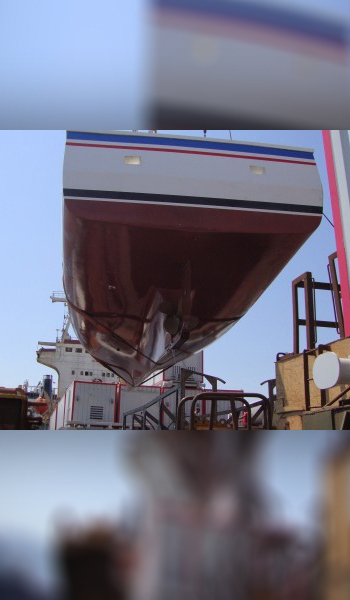

YACHT TRANSPORT
We perform yacht transportation with our world wide agency network. World wide basis from length 4 meters upto 40 meters boats and yachts.
Depending your rotation and boat size transportation to be performed with flat rack container or Ro-Ro type and box shape vessels.
Yacht and boat transportation, port to port, door to door, water to water is the one of experience more than 20 years.
We need the following information to set up a clear outline of the boat carriage and the relevant cost;
- The dimensions of the boat (length, beam, height)
- Whether a cradle is available or not,
- The drawings or the photo of the boat. If the boat has standard dimensions, then it will be sufficient for us to be informed about the model of the boat.

Overland transport
Small boats being transported short distances are often moved using private or commercial trailers. As the boat size and the over-land distances increase, commercial trailer services are typically employed by boat owners to move vessels. Insurance coverage, transport permits, trailer safety and proper preparation and loading of the vessel and contents are aspects commercial boat/yacht services provide.
Semi-submersible ships (SSS)
Semi-submersible ships were developed to move large (project) cargoes, but have now been adapted for yacht shipping. These ships are semi-submersible. This means that by ballasting, they can submerge their cargo holds. Yachts motor under their own power into the flooded cargo holds to load. Once all the yachts are in position and secured, divers weld hull supports into place. The ship deballasts and sails away. At discharge port arrival, the process is reversed, with the ship ballasting, allowing the yachts to exit. Semi-submersible shipping is arranged by the owners.
Deck cargo
Yachts can be shipped as deck cargo. Yachts are loaded directly from the water or from shore. Yachts are loaded by ship or by shore cranes in cradles either supplied by the carrier or the owner. For conventional deck cargo shipping, the rigging is left intact. Yachts are also transported by container ships. Because container freight is sold on the basis of total enclosed volume, efforts are made to decrease that volume, including derigging the boat. Deck cargo shipping is normally arranged directly with the shipping lines or with brokers who specialize in yacht deck cargo shipping.
Container shipment
If a yacht meets the restrictions imposed by container sizing, typically 39 ft. (11.9 m.) x 7.5 ft. (2.3 m.) x 9.3 ft (2.8 m.), container shipping is an alternative. Container shipping is arranged through freight forwarders.
Costs include the cost of preparation, cradles, documentation, and customs and other government fees. Container shipment costs are almost independent of distance shipped and depend more on imbalances in container locations.
Scheduling
The Semi-submersible ships travel on fixed schedules over popular routes such as to and from the US, Europe, the Caribbean, and Pacific Ocean destinations.
While in theory, deck cargoes can be arranged between any two ports and at any time, costs are reduced if a number of yachts are shipped together. Because most ships are non-US flag carriers, they are forbidden by law to transport cargoes between US ports. To comply with the law, they load or discharge in Canada, the Bahamas or Mexico. Container shipping offers complete flexibility with respect to ports and timing.
Security
The locked and sealed container provides the best overall security. The semi-submersible ships because they are dedicated to yacht transport, also offer a secure environment. In addition to theft. another potential problem is partial or total losses at sea. Probability of losses is low, reflected by the lower cost of insurance.
The increasing cost of fuel, the convenience, and the ability to go anywhere make yacht transport an attractive alternative.


